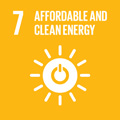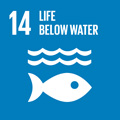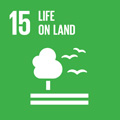- Docente: Elena Biagi
- Credits: 3
- SSD: CHIM/11
- Language: Italian
- Teaching Mode: Traditional lectures
- Campus: Bologna
-
Corso:
Second cycle degree programme (LM) in
Chemical and Process Engineering (cod. 8896)
Also valid for Second cycle degree programme (LM) in Chemical and Process Engineering (cod. 8896)
-
from Sep 16, 2024 to Oct 18, 2024
Learning outcomes
This course aims to provide students with fundamental knowledge of applied biochemistry and microbiology, allowing the comprehension of the role of biological agents in main processes related to the biotechnological, food and chemical industry.
Course contents
Requirements/Prior knowledge
A prior knowledge and understanding of organic chemistry and microbiology (or at leasts basic of biology) is suggested to attend with profit this course.
This knowledge can be aquired through the Courses: "Organic Chemistry and Laboratory T", which is proposed at the first year of the First cycle degree/Bachelor in Chemical and Biochemical Engineering at the University of Bologna (which also incluedes chemical laboratory experiences); and Biochemistry and Biotechnology for the Chemical Industry T", which is proposed at the second year of the same degree.
Fluent spoken and written English is a necessary pre-requisite: all lectures and tutorials will be in English
Course contents
Module 1 (3 CFU) - Fundamentals of Industrial and Environmental Biotechnology M
Cell types and major cell constituents. Enzymes and Nucleic acids: their structure and functions.
Metabolism of biogenic compounds. Anabolic and catabolic pathways.
Aerobic respiration of organic compounds: glycolysis, Krebs cycle and oxidative phosphorylation. Examples and main features of industrial and environmental relevant microorganisms respiring aerobically biogenic organic compounds.
Anaerobic metabolism of organic compounds: nitrate-reduction, Fe(III)-reduction, sulphate-reduction, HCO3— reduction (methanogenesis and acetogenesis).
Main features of major industrially and environmentally relevant microorganisms using such respiration routes.
Fermentation of carbohydrates and proteins: fermentation pathways of major relevance for industrial and environmental processes and main features of microorganisms responsible for them.
Anaerobic digestion of organic matter and biowaste and its industrial and environmental relevance.
Biotransformation pathways for inorganic compounds in aerobic habitats, such as nitrification, S° or S= -oxidation, Fe(II) oxidation.
Basics of CO2 autotrophic fixation and of anoxygenic and oxygenic photosynthesis.
Molecular Ecology: the occurrence of the different microbes and microbial processes in the major aquatic and terrestrial natural habitats and what impacts the composition of microbial communities.
Microorganisms mainly involved in biotransformation and detoxification of pollutants, the biochemical-molecular basis associated with their adaptation to the pollutants and their potential industrial exploitation. Main biodegradation/detoxification pathways for aliphatic and aromatic hydrocarbons, including chlorinated derivatives, in aerobic and anaerobic polluted environments. Basics on biotransformation on heavy metals in polluted sites.
Nutritional requirements of chemoorganotrophic industrial and environmental relevant micro-organisms and cultural media employed for their growth. Mixed cultures, co-cultures and pure cultures and conventional and molecular procedures for their characterization and improvement. Conservation of microbial cultures.
Module 2 (6 CFU) - Advances in Industrial and Environmental Biotechnology M
Microbial growth under batch, fed-batch and continuous conditions and kinetics describing the processes. Physical and chemical agents affecting/controlling the microbial growth.
Bioremediation technologies.
Introduction to White Biotechnology for the chemical, textile, pharmaceutical, cosmetic and bioenergy industry and multipurpose and integrated biomass and biowaste-based
Feed-stocks for white biotechnology processing: agricultural and forest biomass, and agro-food industry by-products, effluents, waste and surplus.
White biotechnology for the production of biofuels from dedicated biomass and/or agrofood byproducts and wastes.
White biotechnology for the production of biobased fine-chemicals and materials via biomass and by-products/waste pre-treatment and enzymatic/microbial conversion of the obtained constituents.
Production of biopolymers and microbial polymers from biomass and/or agrofood industry byproducts and wastes.
Readings/Bibliography
Madigan M.T. Martinko J.M., Parker J. (2002) Brock: Biology of Microorganisms.10th Edition, Prentice Hall International, Inc . New Jersey, USA
Pepper, Gerba, Gentry. Environmental Microbiology. Third Edition. Academic Press.
Waites, Morgan, Rockey, Higton. Industrial Microbiology: An Introduction. Blackwell Science.
Teaching methods
Class lectures, in english, using powerpoint slides.
Assessment methods
Achievements will be assessed by the means of a final oral exam, through which the knowledge level acquired by the student on the topics covered in the class, his/her ability to present them clearly and with appropriate language and to discuss them critically will be evaluated.
Higher grades will be awarded to students who demonstrate an organic understanding of the subject, a high ability for critical application and connection between topics, and a clear and concise presentation of the contents.
To obtain a passing grade, students are required to at least demonstrate a knowledge of the key concepts of the subject, some ability for critical application, and a comprehensible use of technical language.
A failing grade will be awarded if the student shows knowledge gaps in key-concepts of the subject, inappropriate use of language, and/or logic failures in the analysis of the subject.Teaching tools
Powerpoint slides will be provided
Office hours
See the website of Elena Biagi
SDGs




This teaching activity contributes to the achievement of the Sustainable Development Goals of the UN 2030 Agenda.
